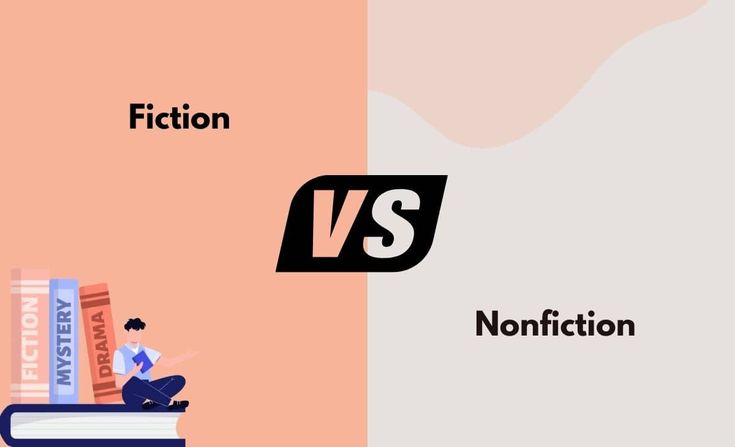Got a story burning inside you? Let’s make it a book. This article breaks down the writing process into simple, actionable steps, from shaping your idea to refining your final draft. With tips to spark creativity and dodge common pitfalls, we’ve got your back. Perfect for first-time writers, this guide fuels your passion and equips you to craft a manuscript that’s uniquely yours.
- Start smart by defining your book’s purpose
- Build your blueprint with a solid outline
- Write first, perfect later (the magic is in the draft)
- Polish like a pro with strategic revisions
- Prepare for publishing with the right finishing touches
The secret of how to write a book step by step? You don’t need to figure it all out today. Just take it slowly & gradually, and by the end of this guide, you’ll have exactly what most aspiring writers lack—a proven system to turn “I want to write” into “I just finished my book.”
Now let’s start our process of how to write a book from scratch. In thisguide, we will walk you through each phase, starting with the most critical foundation—defining your purpose.
Step 1: Define Your Book’s Purpose

Before you write your first sentence, you need a clear vision for your book. This foundation will guide every decision you make, from your writing style to your marketing strategy. Let’s break it down:
Choose Your Genre
Your genre sets reader expectations and determines your book’s structure. Whether you’re drawn to fiction, nonfiction, or memoir, this choice impacts everything from word count to cover design.
Key considerations:
- Fiction (Fantasy, Romance, Thriller): Focus on world-building and character development
- Nonfiction (Self-help, Business, Biography): Prioritize expertise and actionable advice
- Memoir: Balance personal stories with universal themes
Example: J.K. Rowling didn’t just write “a children’s book” – she created a fantasy series exploring themes of love, prejudice, and destiny.
Clarify Your ‘Why’
Understanding your core motivation will sustain you through the book writing process. Your “why” should be powerful enough to keep you writing when motivation fades.
Ask yourself:
- Are you aiming to entertain readers with a gripping story?
- Do you want to educate with practical knowledge?
- Is your goal to inspire personal transformation?
Pro Tip: Bestselling memoirs like Educated by Tara Westover succeed because they combine personal journeys with universal lessons about resilience.
Define Your Audience
Knowing your ideal reader helps tailor your content and tone. A book for busy professionals will differ significantly from one targeting teenagers.
Consider:
- Age range and demographics
- Reading level and preferences
- Problems your book solves for them
Step 2: Outline Your Ideas

Now, that is one of the most crucial parts of how to write a book step by step. Here, you have to define your book’s purpose; it’s also a time to give it shape. Think of this step as creating a blueprint before building a house – it saves you from costly rewrites later. Here’s how to organize your ideas effectively:
Brainstorming Techniques
Every great book begins with raw ideas waiting to be shaped. Try these proven methods to unlock your creativity:
- Mind maps: Start with your central theme and branch out with related ideas
- Sticky notes: Perfect for visual thinkers to rearrange scenes or chapters
- Free-writing: Set a timer for 15 minutes and write without stopping
Example: Dan Brown famously used mind maps to plot his complex thriller The Da Vinci Code, connecting historical facts with fictional elements.
Structure Your Book
Your outline is your roadmap to avoid getting lost in the writing process. The structure differs by genre:
For Fiction:
- Create character bios (appearance, motivations, flaws)
- Map your 3-act structure (setup, confrontation, resolution)
- Plan key plot points and twists
For Nonfiction:
- Break content into logical sections
- List key takeaways for each chapter
- Include research sources and interviews
Pro Tip: Tools like Scrivener (for writers) or Trello (for visual planners) can help organize complex projects. Many bestselling authors swear by these digital assistants.
Bonus: Leave room for spontaneity – some of the best ideas emerge during writing!
Step 3: Write Your First Draft
This is where the magic happens and by magic, we mean showing up consistently to transform your outline into actual pages. The first draft isn’t about perfection; it’s about progress. Here’s how to power through:
Set Realistic Goals
Consistency is your secret weapon; small daily progress beats occasional bursts. Whether you choose 500 words per day or three chapters per week, pick a goal that fits your schedule without burning you out.
- Word count targets: 500 words per day = 90,000 words in 6 months
- Time-based goals: Write 45 minutes every morning before work.
- Chapter goals: Finish 1 chapter every 10 days
Pro Tip: Bestselling author Jodi Picoult writes just 1,000 words daily—proof that slow and steady wins the race.
Silence Your Inner Critic
First drafts are supposed to be messy so no need to be worry about that just focus on getting ideas down, not polishing them. Save the editing for later stages when you have a complete manuscript to work with.
- Repeat this mantra: I can fix bad writing, but I can’t fix a blank page.
- Try “vomit drafts”: Write freely without editing as you go
- Highlight problem areas to revisit later (use [brackets] or comments)
Example: Anne Lamott’s famous “shitty first drafts” philosophy reminds us all first drafts are meant to be imperfect.
Tools to Stay Focused
Distraction-free tools like FocusMate (virtual coworking) or Cold Turkey Writer (forced full-screen mode) keep you locked in. The Pomodoro Technique (25-minute sprints) also works wonders for maintaining momentum.
Writing Assistants:
- Grammarly (catches typos without breaking flow)
- Hemingway Editor (simplifies complex sentences)
Focus Tools:
- FocusMate (virtual accountability partner)
- Pomodoro timer (25-minute sprints with breaks)
Distraction-Free Apps:
- Cold Turkey Writer (full-screen, no-exit mode)
- OmmWriter (calm writing environment)
Pro Tip: Grammarly catches typos without interrupting your flow—use it after drafting.
Step 4: Revise Ruthlessly
Your first draft is just raw material, and now it’s time to sculpt it into something readers will love. This is where many writers stall in their how to write a book step by step journey, but revision is precisely where good books become great. It requires brutal honesty, a sharp eye for detail, and a willingness to transform your work.
Self-Editing Tips
Start by refining your manuscript yourself before seeking outside feedback. These strategies separate amateurs from pros:
- Read aloud: Catch awkward phrasing and unnatural dialogue your eyes might miss.
- Cut the fluff: Delete redundant scenes, filler words, and anything that doesn’t serve the story or message.
- Check pacing: Ensure no sections drag (boring) or rush (confusing).
Pro Tip: Stephen King recommends cutting 10% off your first draft—be merciless!
Beta Readers & Feedback
Fresh eyes reveal blind spots you can’t see after months of writing. Here’s how to leverage beta readers effectively:
- Where to find them: Writing groups (Facebook, Meetup), genre-specific forums, or paid services like BetaBooks.
- What to ask: “Were any parts confusing?” “Which character felt flat?” “Did the ending satisfy you?”
- Who to pick: Mix of fans and critical thinkers—not just friends who’ll praise you.
Example: Andy Weir (The Martian) famously refined his book through serialized feedback on his blog.
Step 5: Professional Editing & Polishing
Let’s be realistic, mastering how to write a book step by step means swallowing your pride sometimes. I’ve seen Pulitzer winners get humbled by a good editor’s red pen. That ‘can’t-put-it-down’ sparkle? It’s not magic, and it’s the grind of a pro who spots the awkward bits you’ve gone blind to after rereading your draft 47 times.
The right editor doesn’t just fix commas; they are your secret weapon for making your voice sound more like you than you ever could alone. And yes, that’s worth every penny.
Editing Types
Editing isn’t one-size-fits-all; each stage solves different problems. Developmental editing reshapes weak foundations, while line editing fine-tunes rhythm and voice.
Key layers:
- Developmental: Fixes plot holes, pacing, or argument logic (for nonfiction).
- Line: Sharpens sentence flow and eliminates awkward phrasing.
- Copy: Hunts typos, grammar slips, and consistency errors.
Pro Tip: Fiction authors often prioritize developmental edits, while nonfiction writers may start with line editing.
Hiring an Editor
A skilled editor feels like a creative partner, not a word mechanic. The best ones specialize in genres and adapt to your voice, not force textbook rules.
Red flags to avoid:
- No portfolio or genre-specific samples
- Inflexible “my way or the highway” feedback
- Vague contracts about revision limits
Golden Rule: Always request a sample edit—their notes on 2-3 pages reveal their style and attention to detail.
Step 6: Publishing Your Book
The finish line is in sight, and ideally, this should be the last step of how to write a book step by step—but how you publish impacts everything from royalties to creative control. Whether you dream of a traditional book deal or crave indie freedom, here’s how to navigate your options like a pro.
Traditional vs. Self-Publishing
Each path serves different goals and requires unique strategies:
Traditional Publishing
- Pros:
- Publisher handles editing, design, and distributionPrestige of industry validation
- Potential for advances (though rare for debut authors)
- Cons:
- Long timelines (18-24 months to market)
- Less creative control
- Highly competitive (often requires an agent)
Self-Publishing
- Pros:
- Full creative control and faster time-to-market
- Higher royalty rates (50-70% vs. 10-15% traditional)
- Direct relationship with readers
- Cons:
- Upfront costs for editing/design
- Requires entrepreneurial hustle for marketing
- No guaranteed bookstore placement
Pro Tip: Hybrid authors like Brandon Sanderson use both models strategically.
ISBN, Cover Design & Formatting
Don’t let technical details derail your launch. Here’s your pre-publish checklist:
Must-Haves:
- ISBN: Your book’s fingerprint (purchase through your national ISBN agency)
- Cover Design: Hire a pro—readers do judge books by their covers
- Formatting: Different specs for print (bleed margins) vs. eBooks (reflowable text)
Pro Moves:
- Copyright registration (optional but recommended)
- Print-quality proof review (avoid costly reprints)
- Metadata optimization (keywords, categories for discoverability)
Conclusion: Your Book Awaits
You’ve now mastered on how to write a book step by step process—from defining your book’s purpose to polishing your final draft and choosing a publishing path. Remember: every bestselling author started exactly where you are now, staring at a blank page with more questions than answers.
Here’s the truth: Your book already exists. It’s in your head, your notes, and your passion. You don’t need magic—just the discipline to take it one step at a time. Outline. Write. Revise. Repeat.
Feeling overwhelmed? That’s normal. But you don’t have to do it alone. Book Publishing LLC specializes in turning messy drafts into professional books, offering:
- Expert guidance at every stage
- Tailored solutions for your genre and goals
- A partner who cares about your vision as much as you do
Contact Us Today—your future readers are waiting.

